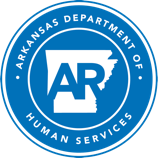FOR IMMEDIATE RELEASE
Media Contact:
Brandi Hinkle
Deputy Chief of Communications
DHS to Help Combat Opioid Addiction
The Arkansas Department of Human Services (DHS) Division of Behavioral Health Services will receive a two-year, $8 million grant to combat opioid addiction in the state.
Opioids are prescribed to treat moderate to severe pain and are more commonly known as oxycodone, hydrocodone and morphine. Opioid overdoses were responsible for more than 33,000 deaths across the country in 2015, the latest data available.
Five prioritized specific strategies have been identified by DHS for the funding: strengthening public health surveillance, advancing the practice of pain management, improving access to treatment and recovery services, targeting availability and distribution of overdose-reversing drugs, and supporting cutting-edge research.
“This additional funding will enable us to target services to combat the opioid issue in Arkansas,” said Paula Stone, DHS assistant director of the Division of Behavioral Health Services, “with more evidence-based treatment.”
The state received the State Targeted Response to the Opioid Crisis Grant which aims to address the opioid crisis by increasing access to treatment, reducing unmet treatment need, and reducing opioid overdose related deaths through the provision of prevention, treatment and recovery activities for opioid use disorder (OUD), including prescription opioids as well as illicit drugs such as heroin.
Grantees are required to do the following: use epidemiological data to demonstrate the critical gaps in availability of treatment for OUDs in geographic, demographic, and service level terms; utilize evidence-based implementation strategies to identify which system design models will most rapidly address the gaps in their systems of care; deliver evidence based treatment interventions including medication and psychosocial interventions; and report progress toward increasing availability of treatment for OUD and reducing opioid-related overdose deaths.
States are required to use funding to supplement and not supplant existing opioid prevention, treatment, and recovery activities in their state. Arkansas has the lowest percentage of people with an opioid addiction for which buprenorphine is available. For this reason grant funding will be used to expand the statewide availability of Medication Assisted Treatment through DBHS eight funded treatment providers.
The goals of the grant are to: expand PDO prevention efforts by supplying naloxone to first-responder agencies in additional communities and expanding the ongoing media campaign and health literacy efforts; train families and healthcare providers on recognition of signs of opioid addiction, referrals to treatment, and interventions; increase access to OUD treatment using Evidence-Based Practices (EBPs); and provide OUD recovery support through peer specialists and recovery coaches associated with OUD treatment centers.
The Division of Behavioral Health Services is responsible for ensuring there are available public behavioral health services, including mental health and substance abuse prevention, treatment, and recovery services. It also supports, certifies, licenses, and funds behavioral health providers throughout the state and operates the Arkansas State Hospital, the only state-funded psychiatric hospital, and the Arkansas Health Center, a state-funded nursing home.
Latest statistics from the CDC, Arkansas Department of Health, DHS and Community Organization for Drug Education:
• In 2012, Arkansas ranked 8th in the nation for prescriptions of opioid pain relievers
• In 2013, Arkansas had the highest rate of teen prescription drug abuse in the country
• The rate of abuse of pain relievers in highest in ages 12-25 in Arkansas
• Heroin use rates are greater for Arkansas high school seniors than the national rate
• Between 2005-2013, the number of people receiving treatment for illicit drug use in Arkansas was higher than the national average
• Nearly four out of five Arkansans abusing illicit drugs during 2005-2013 never received treatment
• A single day count in 2013 found 5,927 individual enrolled in substance abuse treatment in the state
• Risk factors for adolescent drug abuse include a family history of substance abuse and high risk behavior, family conflict and management problems, and favorable attitudes toward substance abuse
For more information about opioid use and abuse in Arkansas and across the nation, visit cdc.gov/drugoverdose/opioids/index.html.
-30-



